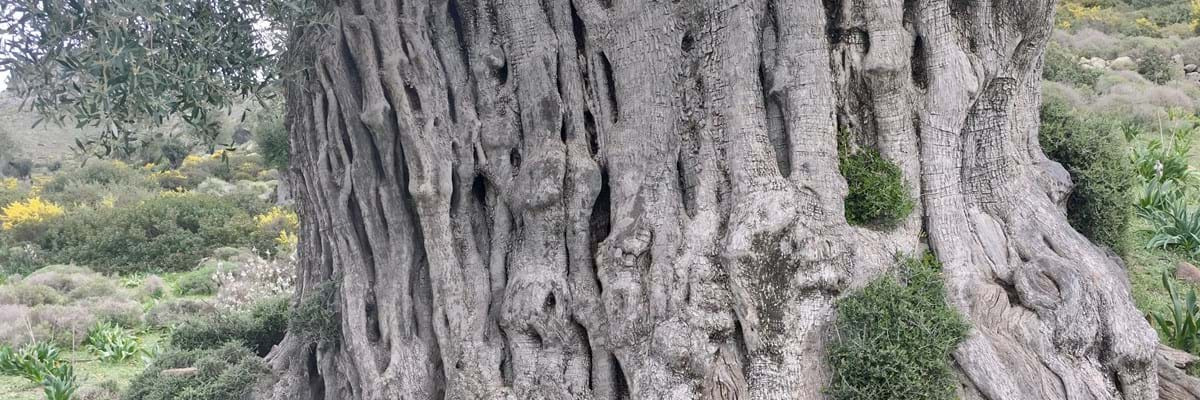Olive trees in a “sacred” valley on an extinct volcano in the heart of Aegina may be 2,000 years old and are still alive.
Tucked away in a remote mountain-side valley in Aegina is what some describe as a sacred place. The rock-strewn landscape is scented by wild herbs. Goats, tortoises and hares live there.
It’s a place dotted with olive trees, not unusual in Greece. Some look like any other trees. The silver green leaves shine in the sun and rustle in the wind. But some trees are gigantic and wizened by age. One has a gnarled and hollow trunk with a circumference of more than 40ft.

This is the Valley of Eleonas, the Greek for olive groves, and it is possible that olives have been growing there since ancient times. Some people believe that the oldest trees still alive may date back 1,000 or even 2,000 years. Tests have shown that some are up to 500 years old at least.
The tranquil valley is in the foothills of Mt Oros, an extinct volcano and highest mountain on the island. It’s a mile or so from the west coast beaches of Marathonas and south of Pachia Rachi. The only way to get there is on foot.
The land and most of the trees are owned by a monastery. There are a few small churches and chapels in the valley and the ruins of some houses. The area is a refuge for wildlife. However, there is a belief on Aegina that it should be officially recognised and protected as a sacred place.




